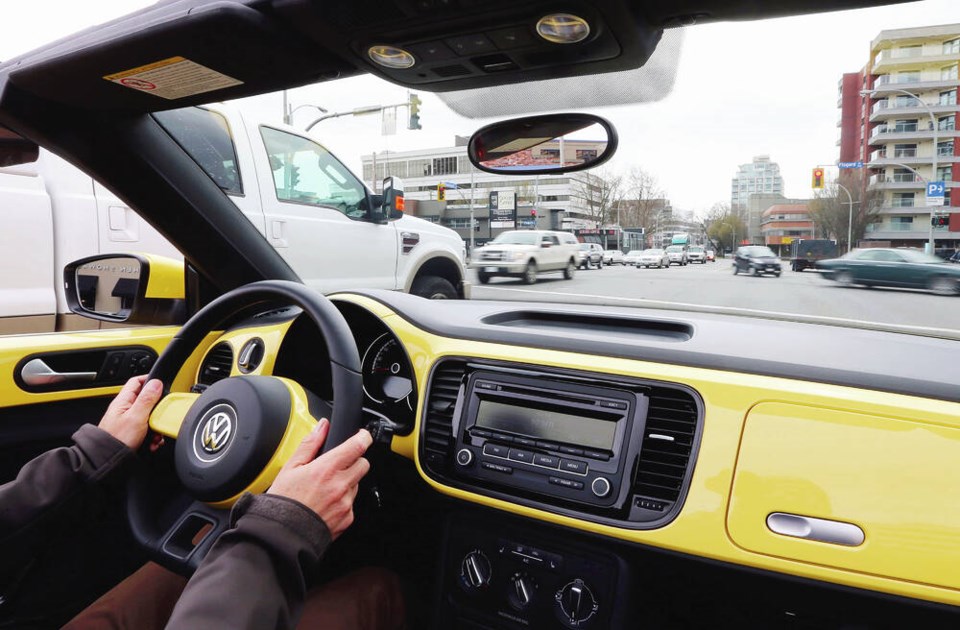Our sun, that gigantic ball of helium and hydrogen, has been with us for a long time now — 4.5 billion years according to NASA.
On a cloudless day we know it’s going to be there, yet this past month I’ve seen a couple of incidents where drivers were clearly unprepared for all our sun has to offer.
In both cases those drivers were being blinded by the sun’s glare and the only tool at their disposal to try and minimize the problem was their hand, held up in front of their face.
In one instance a driver in front could not see that the traffic light in front had changed to green because of the glare, and was sitting there until horns started blaring. In the other case a driver narrowly avoided crashing into a left turning vehicle at an intersection, blinded by facing directly into the sun.
In both cases, though the hands were up in front of the faces trying to block the sun rays — it wasn’t working.
A few years ago there were some metaphor ads on TV promoting workplace safety. One ad showed a hockey goalie blocking pucks while not wearing any equipment. Another showed a worker without any face protection hovering over an industrial grinder while showers of metal chips peppered his face.
I thought of those ads when I saw those two drivers struggling to peer through the glare, unable to see the scores of other vehicles moving near them.
Sun-glare related crashes are more common than you might think. Last year alone it was estimated to cause more than 9,000 crashes in the U.S.
Like it or not, driving is work and to complete that job you need the proper equipment because your eyes are the most important tool your body uses to drive safely.
Quality sunglasses are an essential part of the safe driving tool kit. Sunglasses do two things for safe driving: They create a better overall site picture by reducing glare, exposing objects which could be obscured — like another car or a person; and they reduce squinting and eye fatigue — the last thing you need while driving a car.
A medical eye specialist is the best source to figure out what kind of sunglasses are best for you but many driving experts advocate for polarized lenses because they neutralize UV rays and enhance contrast, which help your eyes to better define objects that pop up.
Don’t stop at just the effectiveness of the lenses either. A while back I lost a pair of sunglasses (a common occurrence) and had to quickly find a replacement. When choosing my new pair, I didn’t pay any attention to the arms, which were nice and robust but they were so wide that they interfered with my peripheral vision while driving.
After surgery for a torn cataract, my specialist told me to wear sunglasses as much as possible, even when cloudy. There’s still a lot of glare on cloudy days and ÎÚÑ»´«Ã½ weather changes on a dime. Driving rain can often end in a few minutes and inevitably that hole in the clouds has the sun shooting right into your face, coupled then with severe road glare. Leaving a spare pair of sunglasses in your car, for those scenarios, can be a lifesaver.
Finally, clean your windshield regularly — inside and out. Streaks and dirt get magnified by the sun’s powerful rays and ensure your sun visor actually works. It’s not a shelf for old lottery tickets and can be your last defense in those times you’ve forgotten your trusty shades.
Glove Box: Keeping cyclists safe is everyone’s job out there, but some drivers overdo it. Cyclists should be given at least a metre’s berth (three feet) when passing them — more if it’s safe. But crossing over solid lines into oncoming traffic is going too far. If you’re having trouble judging distances or the perimeter around your car — ask yourself why. It might be time for an eye exam or some extra practice in company with a co-pilot to see how you’re doing.
It’s road construction time again — though, recently there doesn’t seem to be any difference in the amount of road or building construction regardless of the time of year. But drivers need to concentrate more than ever because road crews and flaggers are vulnerable. According to Worksafe ÎÚÑ»´«Ã½, 12 flaggers were killed in this province, after being struck by a vehicle, between 2012 and 2020. That’s 12 too many. Disobeying a flagger can cost you $196 and three points. Often though these are cases of driving without due care and attention. That one goes for $368 and six points — or even a mandatory date with a judge if warranted.
>>> To comment on this article, write a letter to the editor: [email protected]



